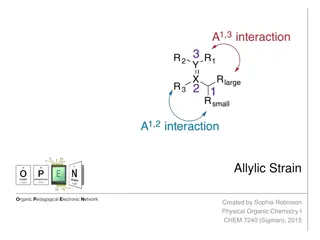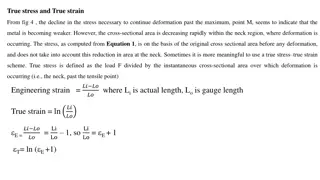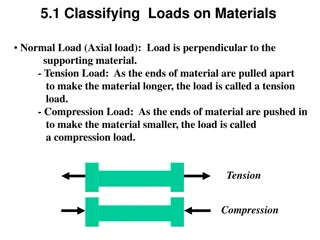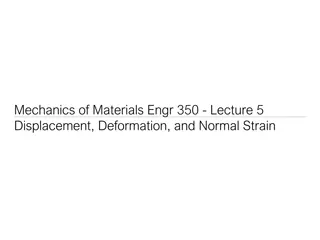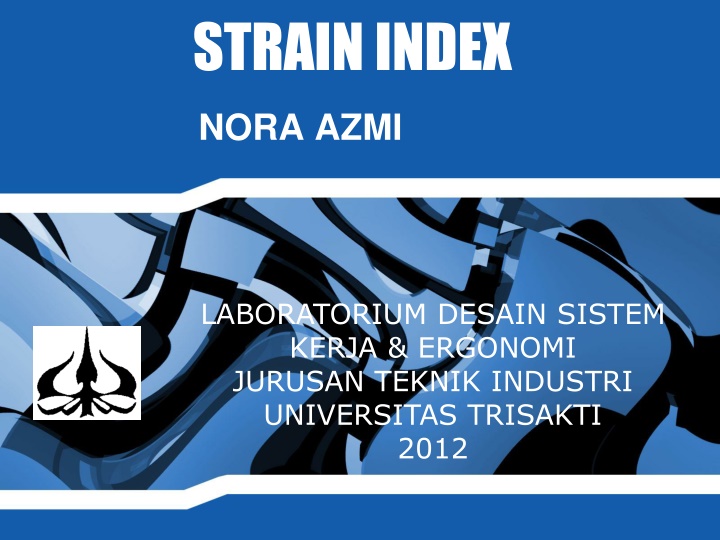
Strain Index Method for Evaluating Musculoskeletal Disorders in Work
Discover the Strain Index (SI) method developed to assess the risk of musculoskeletal disorders in the distal upper extremity, offering a comprehensive analysis of job-related factors to enhance workplace ergonomics and worker well-being.
Download Presentation

Please find below an Image/Link to download the presentation.
The content on the website is provided AS IS for your information and personal use only. It may not be sold, licensed, or shared on other websites without obtaining consent from the author. If you encounter any issues during the download, it is possible that the publisher has removed the file from their server.
You are allowed to download the files provided on this website for personal or commercial use, subject to the condition that they are used lawfully. All files are the property of their respective owners.
The content on the website is provided AS IS for your information and personal use only. It may not be sold, licensed, or shared on other websites without obtaining consent from the author.
E N D
Presentation Transcript
STRAIN INDEX NORA AZMI LABORATORIUM DESAIN SISTEM KERJA & ERGONOMI JURUSAN TEKNIK INDUSTRI UNIVERSITAS TRISAKTI 2012
REFERENSI Chapter 9, Handbook of Human Factors and Ergonomics Methods, in Stanton, N. et al. (eds.) (2004) J. Steven Moore and Arun Garg, The Strain Index: A Proposed Method To Analyze Jobs For Risk Of Distal Upper Extremity Disorders , American Industrial Hygiene Association Journal, 56:443-458 (1995).
The strain index (SI) is a method of evaluating jobs to determine if they expose workers to increased risk of developing musculoskeletal disorders of the distal upper extremity (DUE) (Moore and Garg, 1995). The DUE is defined as the elbow, forearm, wrist, and hand. SI was developed, because previous exposure assessment methods were subjective, lacked standardization, and did not involve examination of risk factors' interaction.
Strain Index (SI) The Strain Index (SI) is a score value based on a multiple of six variables Rate 6 task variables (Table 1): intensity of exertion (force) duration of exertion (% cycle) efforts per minute wrist posture speed of work duration of task The variables and score in the SI are derived from physiological, biomechanical, and epidemiological principles.
According to work physiology, intensity of exertion (as a percentage of task-specific maximal effort), duration of exertion, and duration of recovery time between exertions are the critical parameters for predicting the onset and magnitude of localized muscle fatigue.
Tahapan Strain Index 1. Mengumpulkan data 6 variabel tugas yang pada SI 2. Menentukan Skala Ordinal Menggunakan Tabel Strain Index (Tabel 1) 3. Menentukan Nilai Faktor Pengali (Multiplier) menggunakan Tabel Multiplier (Tabel 2) 4. Menghitung Score Strain Index (SI) 5. Menginterpretasikan Hasil
Intensity of Exertion An estimation of the strength required to perform the task one time. Guidelines for assigning a rating criterion are presented in the following table:
Duration of Task Informasi lamanya waktu bekerja diperoleh dari pekerja (perusahaan)
Menginterpretasikan Hasil IE 552 16
Contoh Kasus Consider task with: 20% MVC exertions over 60% of a cycle with 12 efforts per minute with 18 ulnar deviations at 95% of normal pace for a full 8-hr shift IE 552 18
IE 552 19
Quantitative Upper Limb WRMSD Risk Assessment The example job is hazardous (13.5>5) Overall, SI improvement over RULA Considers more than basic postures Considers upper extremities Considers effort, intensity, pace Greater quantitative detail Next step data driven risk models IE 552 20
SOAL Untuk pekerjaan merakit mesin pada industri manufaktur otomotif di samping ini, diketahui intensitas pengerahan tenaga cukup keras dengan durasi sekitar 35% dari total waktu pengamatan. Usaha yang dilakukan permenit mencapai 10 kali dengan kecepatan normal (fair). Pekerjaan berlangsung selama 7 jam perhari dengan postur tangan dan pergelangan tangan hampir netral. Hitunglah tingkat resiko ergonomi pekerjaan ini dengan menggunakan metode Strain Index.










